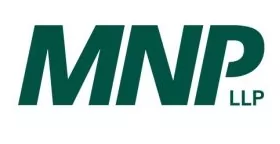With all the recent business fraud scandals, many small business owners are wondering when they'll discover fraud within their own organization.
After all, according to the Association of Certified Fraud Examiners' 2014 Report to the Nations, on average, 5% of an organization's gross annual sales are lost to fraud. The report also indicates that the average case of fraud occurs over a period of at least 18 months before it is detected.
Small businesses are particularly susceptible to fraud for a number of reasons:
1. The owner-manager is typically the driver of sales, out promoting the business and working to create revenue, yet not comfortable with the reporting requirements internally and therefore not aware of how receivables and payables are being managed.
2. The size of the organization restricts the ability to install the necessary internal controls designed to prevent and detect fraud.
3. The owner is trusting.
To complicate matters, most fraud perpetrators are never charged. Instead, these individuals simply move onto their next victim.
Why Fraud Occurs
In an effort to assist the small business owner in recognizing red flags, it's useful to understand two important theories:
The first theory is that 20% of individuals are inherently honest. That is, no matter what the situation, those employees will not take advantage of an employer. A further 20% of individuals are inherently DIS-honest; no matter what they face, these employees are looking to work a deal for themselves to the detriment of the company. That leaves 60% of employees who are honest or not, depending on the situation. Not great odds when you consider then, that 8 out of 10 employees are either stealing from the organization or would steal, should the opportunity present itself.
The second theory is that in order to commit fraud, there are three elements prevalent amongst perpetrators prior to fraud being committed:
1. Financial pressure – a need to generate additional funds either to support a habit (shopping, gambling or drugs, for example) or support an image (breadwinner).
2. Rationalization – the belief that the company or owner 'owes' the employee or that the company has so much, it won't even notice, or that others do similar things so it's ok to join in.
3. Opportunity – the ability (knowledge and or access) to commit the fraud is present due to the experience level of the employee, the lack of internal business experience of the owner / manager, complacent management or weak internal controls.
According to American sociologist Donald Cressey, fraud will not occur unless each of these components is present. Removing even one of these factors can significantly thwart or mitigate losses.
How to Protect Your Business
Considering the theories outlined above, what are the basic steps a small business owner should take to protect his or her assets?
First, it's important to promote a strong sense of ethical behaviour within the organization. Doing so will reduce the ability of the employee to rationalize the misappropriation. This is a simple as a consistent performance management process whereby employees' work is reviewed and assessed regularly. It can also be a more complex system whereby employees sign a corporate code of ethics annually acknowledging the expectations. Keep in mind, however, that no matter how strong the corporate governance is, an employee can still rationalize the theft by tying the act to 'saving a loved one' or 'just borrowing the funds', thereby avoiding the guilt associated with harm to the corporation.
It's also important to be aware of red flags that may indicate financial pressure. These indicators can include, but are not limited to: suddenly purchasing more material items, suddenly carrying large amounts of cash, frequent calls from creditors, irritable or moody behaviour, unnecessary overtime, arriving for work early and staying late, the mention of medical problems, signs of drug or gambling addictions, dissatisfaction at work. Generally after an employee is caught stealing, the owner-manager looks back and recognizes the signs, but it's important to be aware of the signs before they lead to the fraud.
Finally, implementing a system of internal controls that help to both prevent fraud from occurring in the first place and detect fraud after it has taken place is a key step to undertake for all small business owners. This element is the one the owner has the most control over and yet developing a system of processes, procedures and controls that deter employees from committing fraud is usually overlooked due to a lack of understanding by the owner-manager.
The content of this article is intended to provide a general guide to the subject matter. Specialist advice should be sought about your specific circumstances.

